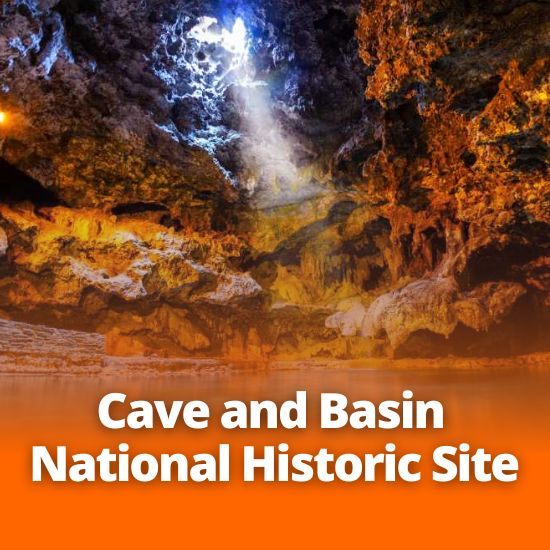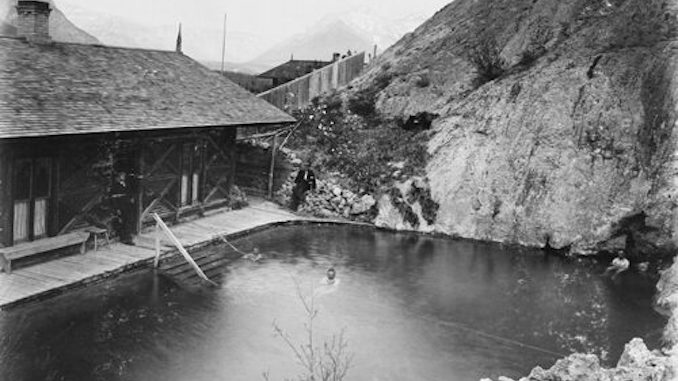
Cave and Basin National Historic Site
Cave and Basin is a historic hot spring located in Banff National Park and has been an important place for the Indigenous Peoples of Canada for over 10,000 years. It was found by three railway workers in 1883 who saw potential for profit in the mineral rich waters; they erected the first crude boundary around what would eventually become Canada’s first national park. Today, the site has become a gathering place for stories and conversation around conservation and connection between humans and the land in Canada’s national protected areas.
After it’s “discovery” by the three railway workers, they wrote to the government to state their claim, setting off a series of legal proceedings around ownership of the springs that resolved in 1885 when the government created the Hot Springs Reserve, an area of 26 km2, the Order in Council stating the springs were “reserved from sale or settlement or squatting….” In 1887, the Reserve was expanded into 655 km2 under the Rocky Mountains Park Act, this acknowledged that “natural areas should be included amongst the country’s sources of wealth and that the parks should belong to the people of Canada.” It officially became Rocky Mountains National Park, the first national park of Canada that then became Banff National Park through the National Parks Act of 1930.
(Personal note from the author, but I’m glad those three railway workers didn’t get to claim the area as their own. It satisfies a part of my soul.)

These days, everyone is able to take in the beauty and history of the area. Tours and educational programs are offered to those interested in learning more about the history and environment of the area, as well as hiking trails, photo opportunities and other draws such as the First World War Internment Exhibit for the historically minded individual.
And I won’t forget you scientific folks: the hot springs provide habitat for rare species of plants, invertebrates and fish as well as acting as the base for the lush environment inhabited by many large mammals such as wolves and bears. These unique elements are part of why only the Banff Upper Hot Springs are open for public use so as to avoid disrupting the lives of many species.
Just because you can’t go for a dip doesn’t mean you can’t still enjoy the area. Take the time for a visit and lose yourself in some of the most beautiful and unique environments the park has to offer!
(Information from Parks Canada, and Banff & Lake Louise)